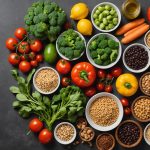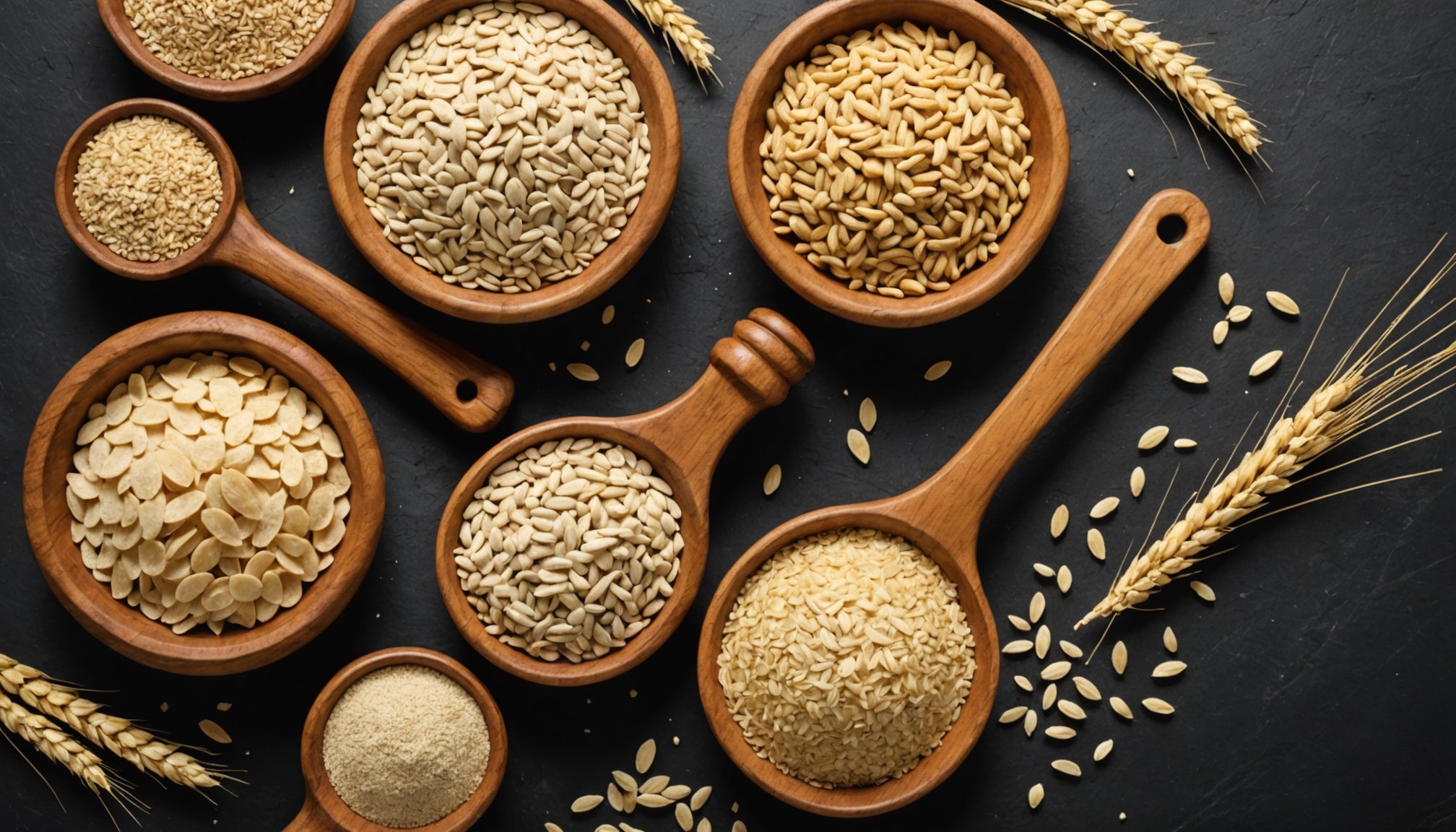Unlocking the Advantages of a Gluten-Free Lifestyle for Those with Non-Celiac Gluten Sensitivity
For many people, the term “gluten-free” is often associated with celiac disease, a chronic autoimmune disorder triggered by the ingestion of gluten. However, there is another significant group that can benefit greatly from a gluten-free lifestyle: those with non-celiac gluten sensitivity (NCGS). In this article, we will delve into the world of gluten-free living, exploring its advantages, practical tips, and the latest research to help you make informed decisions about your health.
Understanding Non-Celiac Gluten Sensitivity (NCGS)
Non-celiac gluten sensitivity is a condition where individuals experience symptoms similar to celiac disease or wheat allergy, but without the same level of immune system activation and intestinal damage. These symptoms can include bloating, abdominal pain, diarrhea, fatigue, and even neurological issues like headaches and brain fog.
Also read : Exploring the Impact of Extended Space Travel on Human Musculoskeletal Health
“Non-celiac gluten sensitivity is a real condition, and it’s not just about being ‘gluten intolerant’ or following a fad diet,” says Dr. Peter Osborne, a leading expert in gluten sensitivity and founder of the Gluten Free Society. “People with NCGS often report significant improvements in their health once they adopt a gluten-free diet”.
Benefits of a Gluten-Free Diet for NCGS
Adopting a gluten-free diet can have numerous health benefits for individuals with NCGS. Here are some of the key advantages:
In parallel : Effective Approaches to Boosting Compliance with Hypoallergenic Diets in Young Eczema Sufferers
Reduced Bloating and Digestive Discomfort
One of the most immediate benefits of a gluten-free diet is the reduction in bloating and digestive discomfort. Gluten can cause inflammation in the digestive tract, leading to symptoms like gas, bloating, and abdominal pain. By eliminating gluten, individuals can experience a significant improvement in their digestive health.
Enhanced Nutrient Absorption
A gluten-free diet often encourages the consumption of whole, unprocessed foods, which are rich in essential nutrients. This shift can lead to better nutrient absorption, as the body is no longer dealing with the inflammatory effects of gluten. For example, fruits, vegetables, and naturally gluten-free grains like quinoa and buckwheat are packed with vitamins, minerals, and fiber.
Potential Increased Energy Levels
Many people with NCGS report feeling more energetic after switching to a gluten-free diet. This increase in energy can be attributed to the reduction in inflammation and the improved nutrient absorption. When the body is not spending energy fighting off gluten, it can allocate more resources to other vital functions.
Improved Focus and Mental Clarity
Gluten sensitivity can sometimes manifest as neurological symptoms, including brain fog and difficulty concentrating. A gluten-free diet has been shown to improve cognitive function and mental clarity in many individuals. This is likely due to the reduction in systemic inflammation, which can affect brain health.
Naturally Gluten-Free Foods: A Comprehensive Guide
When transitioning to a gluten-free diet, it’s essential to know which foods are naturally gluten-free. Here is a detailed list of some of the best options:
- Fruits: Apples, oranges, berries, watermelon, and all other fruits are naturally gluten-free.
- Example: Starting your day with a fruit salad can be a delicious and healthy way to avoid gluten.
- Vegetables: All vegetables, including leafy greens like spinach and kale, and root vegetables like carrots and sweet potatoes, are gluten-free.
- Example: Roasted vegetables make a great side dish and are completely gluten-free.
- Meats and Poultry: Unprocessed meats and poultry are free from gluten.
- Example: Grilled chicken breast or a steak are excellent protein sources that are naturally gluten-free.
- Gluten-Free Grains: Rice, corn, quinoa, millet, sorghum, and buckwheat are all gluten-free alternatives to traditional grains.
- Example: Quinoa is a complete protein and a great substitute for wheat in many recipes.
- Gluten-Free Flour: Almond flour, coconut flour, tapioca flour, and chickpea flour are popular choices for baking.
- Example: Making pancakes with almond flour can be a tasty and gluten-free breakfast option.
Table: Comparing Gluten-Containing and Gluten-Free Foods
| Food Category | Gluten-Containing Foods | Gluten-Free Foods |
|---|---|---|
| Grains | Wheat, barley, rye | Rice, corn, quinoa |
| Baked Goods | Traditional bread, cakes | Gluten-free bread, almond flour cakes |
| Pasta | Traditional pasta | Gluten-free pasta made from rice or quinoa |
| Processed Foods | Many packaged snacks and meals | Certified gluten-free products |
| Flour | Wheat flour | Almond flour, coconut flour |
Practical Tips for a Successful Gluten-Free Diet
Transitioning to a gluten-free diet can seem daunting, but with the right strategies, it can be a smooth and beneficial change. Here are some practical tips:
Read Labels Carefully
Always check the ingredient labels for gluten. Look for certifications like the Gluten-Free Certification Organization (GFCO) or the Celiac Support Association (CSA) to ensure the product is safe.
Focus on Whole Foods
Whole, unprocessed foods are naturally gluten-free and provide the best nutritional value. Incorporate more fruits, vegetables, meats, and naturally gluten-free grains into your diet.
Be Aware of Hidden Sources of Gluten
Gluten can be hidden in many foods, including sauces, seasonings, and even some medications. Always ask questions and read labels carefully to avoid accidental exposure.
Join a Support Community
Connecting with others who have NCGS can be incredibly helpful. Join online forums, support groups, or follow experts like Dr. Peter Osborne to stay informed and motivated.
Common Mistakes to Avoid in a Gluten-Free Diet
While a gluten-free diet can be highly beneficial, there are some common mistakes to avoid:
Overreliance on Processed Gluten-Free Products
Many gluten-free products are highly processed and can be high in calories but low in nutritional value. Focus on whole foods as much as possible.
Ignoring Other Nutritional Needs
A gluten-free diet does not mean neglecting other nutritional needs. Ensure you are getting enough fiber, vitamins, and minerals from a balanced diet.
Not Consulting a Healthcare Provider
Before making any significant dietary changes, it’s crucial to consult with a healthcare provider. They can help you diagnose NCGS and provide personalized advice.
Real-Life Examples and Anecdotes
Many people have found significant relief from their symptoms by adopting a gluten-free diet. Here’s an example:
“Before going gluten-free, I experienced constant bloating and fatigue. After switching to a gluten-free diet, I noticed a dramatic improvement in my energy levels and digestive health. It’s been a game-changer for me,” says Sarah, a 35-year-old who was diagnosed with NCGS.
A gluten-free lifestyle is not just for those with celiac disease; it can be a transformative choice for individuals with non-celiac gluten sensitivity. By understanding the benefits, knowing which foods are naturally gluten-free, and avoiding common mistakes, you can unlock a healthier, more energetic you.
As Dr. Peter Osborne emphasizes, “The key is to focus on whole, unprocessed foods and to be vigilant about hidden sources of gluten. With the right approach, a gluten-free diet can be a powerful tool for improving your overall health and well-being”.
Whether you’re just starting your journey or are already on the path to a gluten-free lifestyle, remember that every step towards a healthier diet is a step in the right direction.











